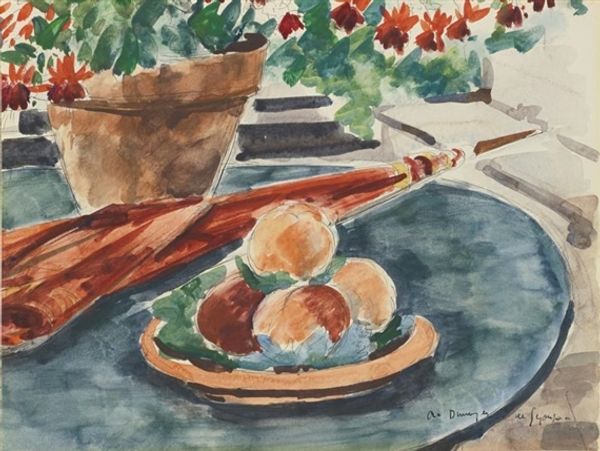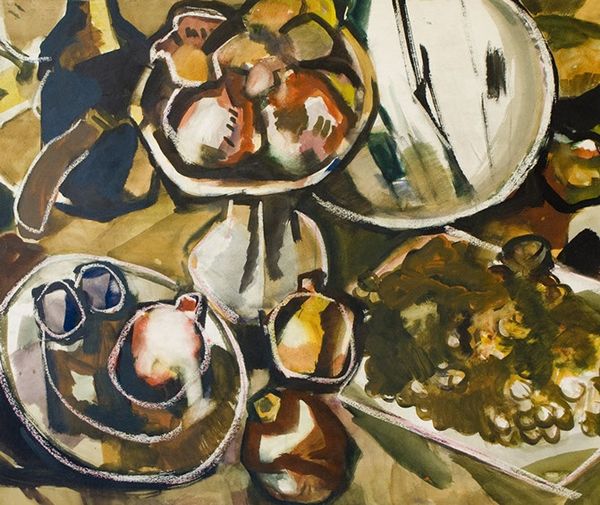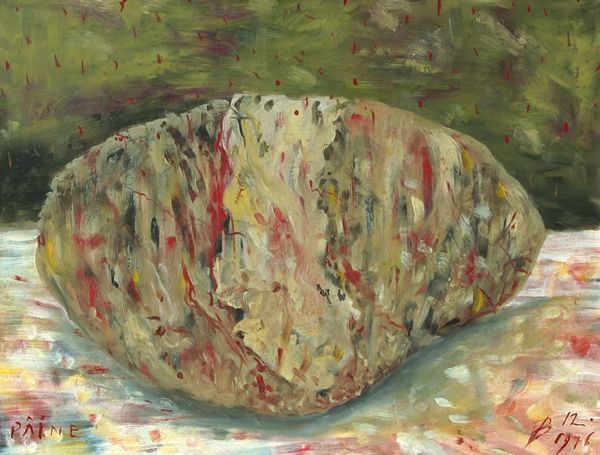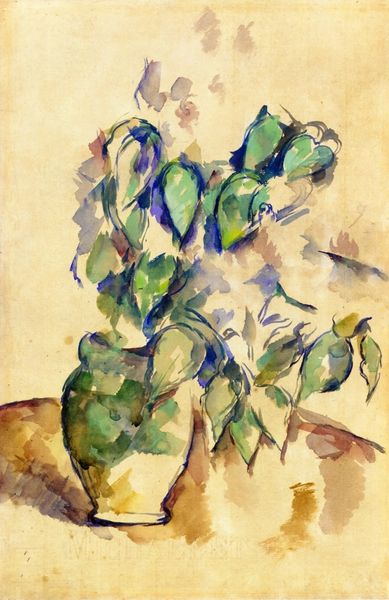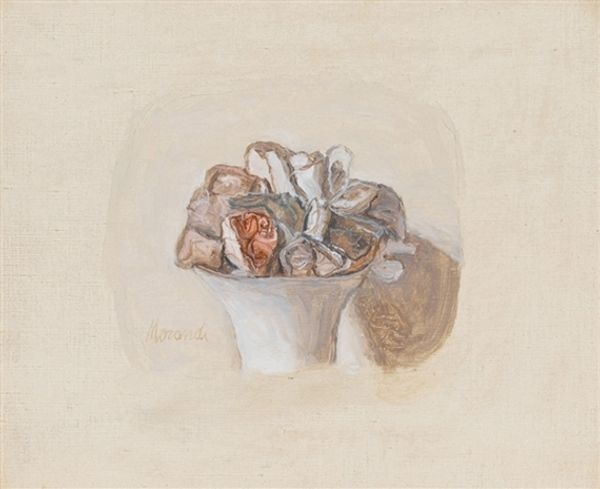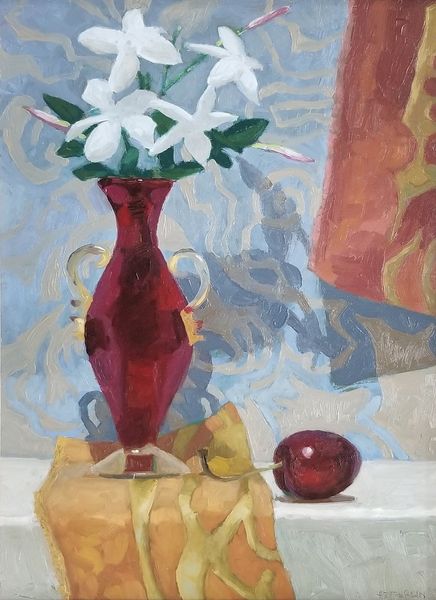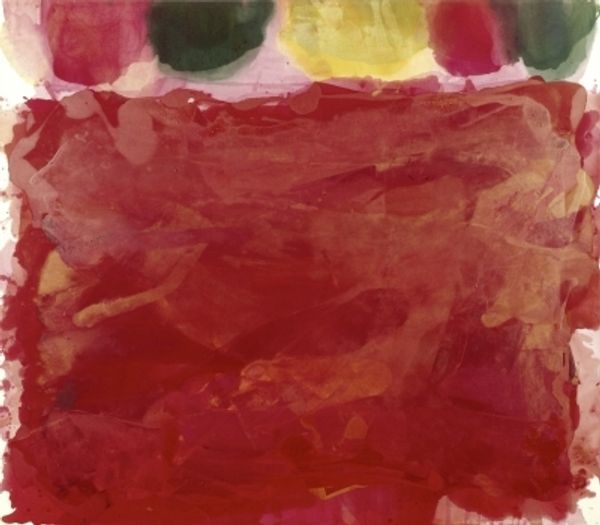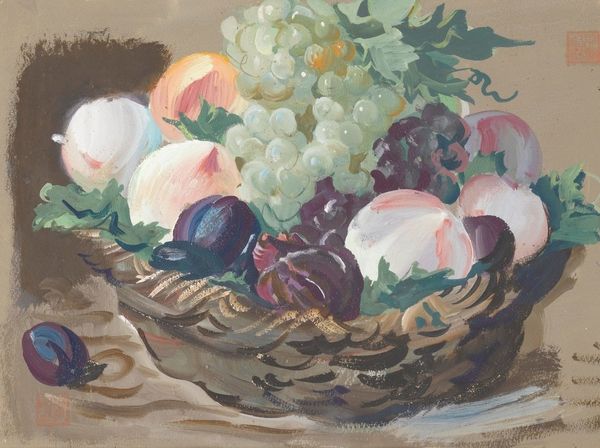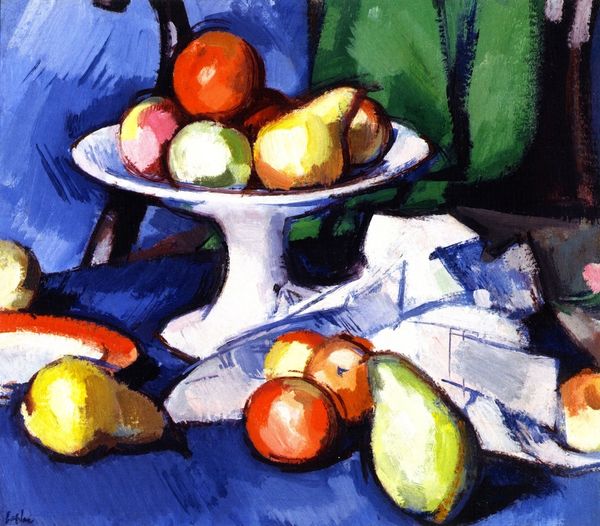
watercolor
#
watercolor
#
modernism
#
watercolor
Copyright: Avigdor Arikha,Fair Use
Editor: So here we have Avigdor Arikha's "Apple, Half-Peeled on a Black Plate," done in watercolor in 1976. The contrast between the dark plate and the brightly colored apple really grabs your attention. It feels almost…unfinished, you know? What do you see in this piece? Curator: What I find fascinating is how Arikha, who abandoned abstract art for realism, captures this mundane object. Consider the date – 1976. We're moving away from the conceptual art movements. The apple, almost carelessly presented, begs questions about consumerism. It's a still life, but it's not opulent or celebratory. Editor: That's a great point. It's not the typical bountiful still life we are accustomed to seeing from earlier periods in painting. Curator: Exactly! Instead, the peeling, the darkness of the plate… does it speak to waste? Or a commentary on societal inequalities in access to resources, rendered at a moment of global upheaval and economic uncertainty? Editor: So you're saying it’s less about the apple itself and more about what it represents in that specific cultural moment? Curator: Precisely! The very act of depicting it in watercolor, a medium often associated with delicacy, contrasts with the potential starkness of its meaning. It's an engagement with power, with privilege, even through something as small as an apple peel. What do you make of that tension? Editor: I see what you mean! I originally thought it was just a simple still life, but you’ve completely reframed it. Now I’m thinking about waste, access, and how even a peeled apple can be a political statement. Curator: It's these dialogues between the everyday and the critical that make art so engaging, don’t you think? Editor: Absolutely. It really makes you look at things differently.
Comments
No comments
Be the first to comment and join the conversation on the ultimate creative platform.


